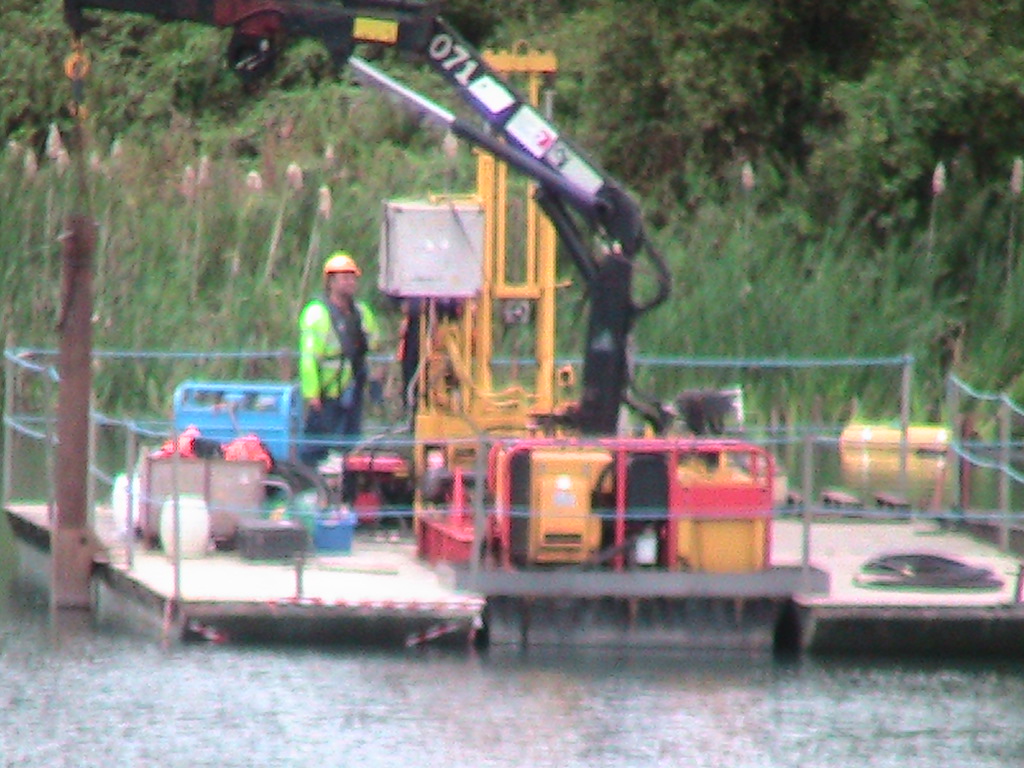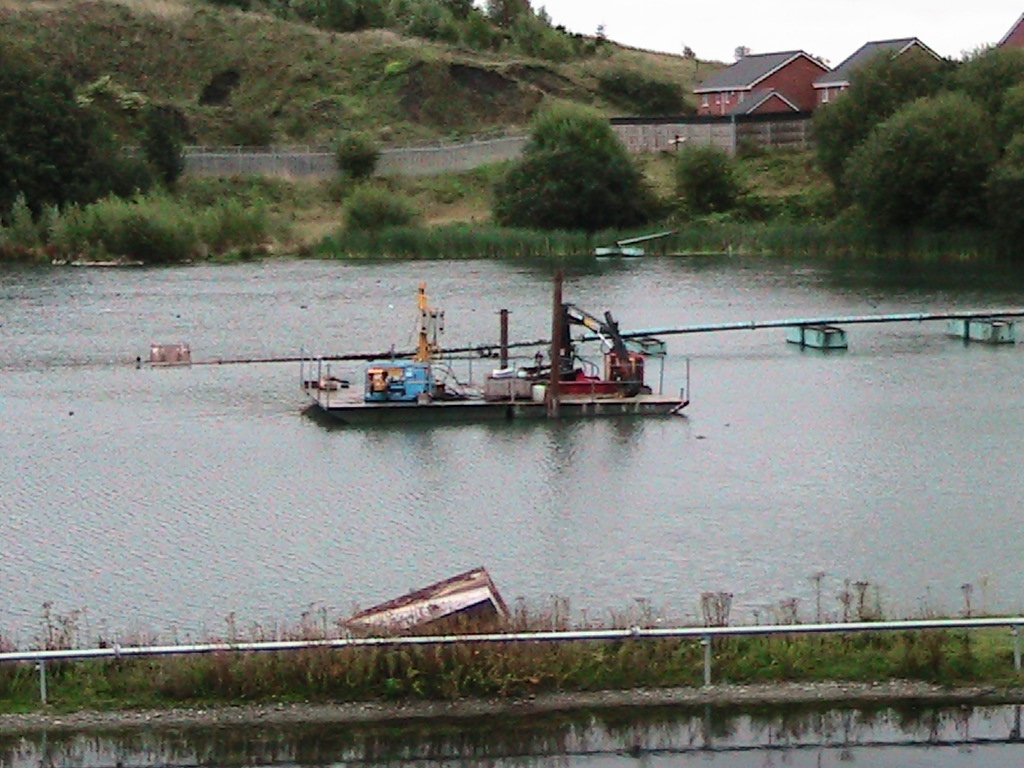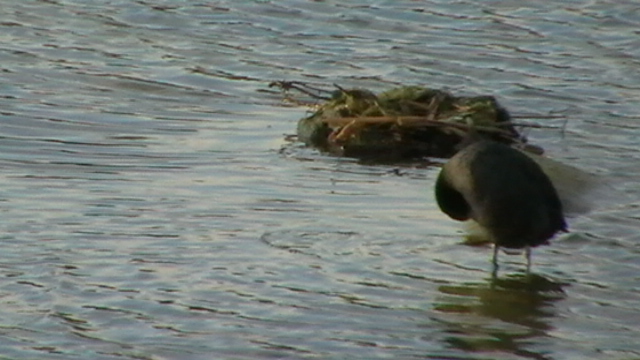(Première partie- hire an environmental consultant.

HIRE AN ENVIRONMENTAL CONSULTANT- GET THEM INTO HERE!
When Rhodia could no longer ignore their white phosphorus problem site or put a lid over the bad publicity concerning bird deaths on it, they must have asked themselves the question “how do you solve a problem like “the mere”? Corporate documents show that their sites at “Oldbury rattlechain and Halifax” were known to be potential sources of financial burden in terms of remediation.
Rhodia’s use of environmental consultants appears to start with URS and the so far unpublished reports concerning the sediment sludge in 2002. Cullen, R. & Jeffrey, R. 2002 -RESTORATION OF THE RATTLECHAIN SLUDGE LAGOON, unpublished URS report to Rhodia Ltd. Leeds.
Following meetings where we raised issues concerning white phosphorus and wildfowl mortality, they undertook “The Rattlechain lagoon bird management plan” in 2008- a year before the first swan tissues were tested for white phosphorus.
This preposterous conception failed to mention white phosphorus and wildfowl mortality once- except in the references that we had provided Rhodia , and attempted to divert attention from the bird mortality and its direct cause and the lagoon, and shift it towards the birds’ habits themselves. There was no mention of the proven mortality of white phosphorus that had been examined at Eagle River Flats or the obvious similar symptoms of P4 poisoning that we had recorded at Rattlechain lagoon. However cited in the references on page 19
We supplied Rhodia (on request), with recorded bird death observations that we had made at the lagoon since 1999- though in reality in the early days and long before this, the recording of bird deaths on the site was underecorded. The only accurate figure is likely to be mute swans seen dead on the site, obviously being the most visible in terms of colour and size.
With this, URS constructed the deceptive factors of time of year/climate etc related to the observations of the deaths. All totally meaningless given that there was only one common factor- ingesting toxic white phosphorus in the sediment- but this is what environmental consultants do for their clients, just as the defence lawyer tries to paint a picture white that is black.
Some interesting observations in this report included a site visit by Rhodia and URS on 25th April 2008.
“The site is currently being fenced and to the South a new housing estate is nearing completion. The pipework from the pumphouse along the causeway was being replaced by contractors at the time of the visit.
The lagoon supported a limited flora with a dense mat of willow moss Fontinalis antipyrterica being recorded. This moss is the food plant of mute swan and coot.
Water birds recorded during the visit were an estimated 6 pairs of coot, with four nests visible around the edge of the lagoon, and up to 50 lesser black backed gulls roosting on the discharge pipe. Around the lagoon vegetation comprised of some tall and smaller willow trees and associated bramble and other tall ruderal species.
There were a large number of blue plastic barrels tied to nylon guide ropes across the site but large areas of open water remained.”
Our picture above shows the blue plastic barrels in 2006 across both lagoons.
So in summary the Environmental consultants URS noted that there was an abundance of “natural” food for wildfowl and a lack of anything to stop them landing- the barrels having been previously put across to prevent birds landing but failing.
They ludicrously attempted to suggest that “the high mortality of coot and mute swan in January 2001 may be related to cold weather movements of waterbirds during the winter of 2001.”
Options for preventing the bird “problem” included a pro/con summary and potential for “Good PR opportunity”. They were
Exclusion methods– netting, wiring, floating plastic balls, floating plastic barrels, infilling lagoon, raising level of lagoon, fencing, natural cap.
Chemicals– drugs and toxicants (oh the dramatic irony), water additives
Deterrance methods– visual repellents, water spray devices, noise devices and dogs.
The infilling lagoon option reported;
“One possible option could comprise the complete infilling of the lagoon. It may be possible to slowly infill the lagoon using a combination of geosynthetic materials and engineered fill.
The main issue relating to the infilling option is that of settlement of the waste material, this is likely to be significant, and the volume of material required to fill the lagoon, estimated to be in the region of 600,000m3. This volume would be equivalent to 60,000 truckloads of fill.”
The report concluded for this option- “Weaknesses- Significant volume of material required to fill lagoon creates a very high environmental cost.” “Threats- Difficulties in filling the lagoon and potential for hazard for chemical waste to come to the surface of the lagoon.”
NB No further detail is given as to what problem this would cause!
The “natural cap” option- “to construct a cap below the water table comprising natrual materials” had amongst its “weaknesses” “May encourage the lagoon to become a wildlife haven” and “threats” exactly the same statement. (Oh we thought it was a “safe haven” already according to the delusional Steve Hampson former Rhodia site manager.)
THIS OPTION IS OF COURSE WHAT ERM/RHODIA ARE UNDERTAKING PRESENTLY.
We were originally keen on getting rid of this site altogether and were sold on the idea of infilling the lagoon, but that was before we knew about the difficulties of white phosphorus contaminated sites and the practical methods that had been employed at Eagle River Flats to tackle that wildfowl mortality issue. NB they did not bury the material- they treated it to remove the threat from the birds, rather than removing the birds from the threat.
The comments supplied by The Environment Agency from Dave Whitford Environment Manager are shown below and we would offer the following observations.
- There appears to be great scepticism regarding the proven link between white phosphorus ingestion and bird mortality at the “Hazardous waste” lagoon (the Environment agency classification for this site.) In reality this shows a poor knowledge of the chemical in question and its proven toxic effects. Evidence of testing for p4 in the birds’ tissues, (something that the EA had resisted by testing the sediment for it) later confirmed this causal link and exposure pathway was happening.
- “chemicals would be unacceptable to us if residues are discharged to the canal..”- but not white phosphorus which the E.A do not test for?
- Of the bird deaths and white phosphorus exposure which it claims “is by no means proven”- “If this is the case then they must be ingesting it from submerged sediments.”
The following letter concerning a white phosphorus fire at the lagoon in 1989 gives some context to the comments. In it, a Mr Frances Peters, former health and safety manager at Albright and Wilson provides an account of what happened to a Mr D. Whitford of the Walsall Council Hazardous waste unit- the predecessor reguation authority to the Environment Agency. “it is apparent from this chain of events that we need to ensure that if any material containing traces of phosphorus is spilled onto the surface of the land area for any reason, we quickly excavate and ensure that all contaminated material is submerged beneath the water of the lagoon.”
Read this letter HERE.
- It confirms that dispersing the sludge into deeper waters “… has been done in the past using a floating “sludge gulper”.”
- A further letter from The Environment Agency files from Tom Dutton of Rhodia to the EA confirms the intention to use one of these machines, AFTER THE EA HAD TOLD THEM TO TAKE ACTION TO DISPERSE THE BUILD UP OF WASTE. This inevitably led to the disturbance of white phosphorus in the sediment, and subsequent deaths are highly likely to have occurred as a result of this ludicrous action. The EA officers who told them to do this, are as responsible for the deaths of birds on the lake as the polluter.

The URS report made no conclusion and suggested putting more barrels across the pool to stop birds landing. Yet inexplicably despite this Rhodia decided to clear all barrels from the pool along with part of the pipe, donning white chemical suits shown below. These barrels were stored on the side of the lagoon along with copious amounts of willow moss that the birds fed on. After disturbance of the sediment more dead birds turned up on the pool. The moss and barrels containing the particles of P4 would have dried out and they then caught fire on a hot summers day. NOT SOLVING A PROBLEM BUT MAKING MORE.

Barrels on the left and clear evidence of willow moss also recovered from the pool. This material was obviously not thoroughly washed to remove traces of white phosphorus.
URS RETAINED
In early September 2009 following the previous Rhodia study, and as we awaited the results of the first swan tissues to be tested for white phosphorus, URS undertook another in the form of an overwater study, which for some reason. Rhodia termed a “bathymetric study” -allegedly to map the contours of the lagoon sediment.
IN THE TIMELINE OF EVENTS, RHODIA HAD BY NOW RECEIVED THE BAD NEWS THAT WHITE PHOSPHORUS HAD BEEN FOUND IN THE SWAN, THOUGH THEY HAD NOT YET SHARED THE RESULTS OF THIS STUDY OUTSIDE THEIR CLOSED GROUP.
Subcontractors for the URS exercise were Lankelma. Their account of what they were employed to undertake differs considerably from Rhodias. NOTE “AN OVERWATER INVESTIGATION” .We believe the write up below, we do not from experience believe anything that Rhodia say.
A spud barge was clearly on site as evidenced in the write up, we took pictures below at the time on September 2nd and 3rd.
We have asked to see this study, and the results refered to in the Lankelma writeup. Rhodia played games saying that we could view “the bathmetric report”, by going to their factory, but would not release “the overwater investigation” report publicly, citing reasons of “commercial confidentiality.”
This study was important. It gave them a clear indication of where and how contaminated the lagoon was. This then enabled them to progress the geotextile membrane capping trial, which is what their intention for closure and “remediation” had been all along- this being the most frequent method of white phosphorus lagoon management- Walsh 2009.
This round of unpublished data sets would inform the trial scheme enabling them to cover areas identified as being the most contaminated. When it came to the second round of testing undertaken by ERM for the HPA Human Health Risk Assessment, these areas could then be avoided- to skew the real contamination picture of p4 in the lagoon. If one environmental consultant isn’t enough and you have the dough- you can hire as many as you like to make it look like a concensus of those whose job it is to present a rose tinted view for their rich clients.
MAD CAP IDEA.
URS completed their hatrick of reports for Rhodia in April 2010 with the Report on trial installation of Geofabrics –V2 . It outlined the potential scheme to cover the sediments in the lagoon with a geotextile membrane. NB there is no mention of toxic white phosphorus in this reports 28 pages, nor is it transparent about remediation of white phophorus contaminated lagoons in other countries where it has been undertaken.
“The sediments at the Rattlechain lagoon may be posing an unsatisfactory risk of harm to the local wildfowl population but this has yet to be proven.” is something that expresses the denial that Rhodia/URS were operating under when completing this sorry attempt at solving the white phosphorus problem.
It considered various methods for anchoring the textile underwater. It reported that “Trials had already been completed by Rhodia to assess whether the fabric resisted the migration of sediment and the results were positive. The geofabric was supplied by ABG Ltd and comprised Terrex T345 geotextile with an Abgrid PP20/20 geogrid laminated to one side.”
It also highlighted the use of floating platforms to be used in the real installation of the geofabric system. The sinking of the material revealed serious difficulties in sinking the material under the water, without it forming troughs and ridges, there were also tears created in anchoring the geo textile in place.
The monitoring results of the settlement of the material are a joke, with it rising and falling and being unable to be determined due to weather conditions at the times of visits. In general it offers a poor perspective on how installing a mass quantity of such material will perform over time, without also considering toxic gas generation potential.
Once again we took some pictures for historic posterity during the works.
It became quickly apparent that the material offered a roosting point rather than a covering point.
And by April of that year, a nesting point for probably the same coot.
It was also apparent to Rhodia that the issue of dead birds was going to intensify with the testing of each dead bird for white phosphorus. Several more followed, concluding systemic poisoning by the chemical. With a decisive Freedom of information request and local residents asking questions about their safety, Rhodia then tried to switch the problem away from wildfowl welfare, which it always had denied was at risk from the lagoon, to human health. It was no longer “a safe haven for wildlife”- but in truth it had always been a deathtrap.














